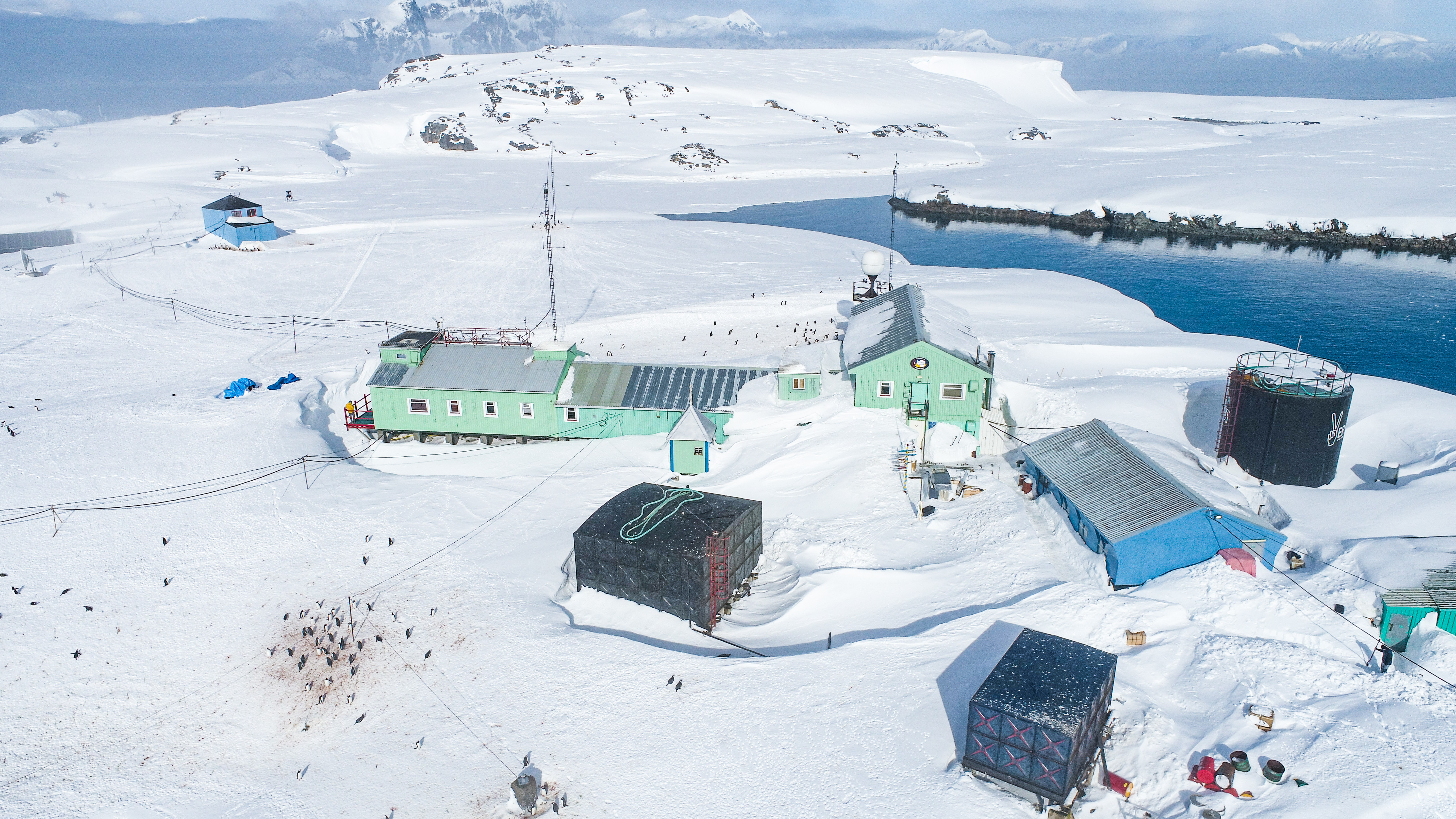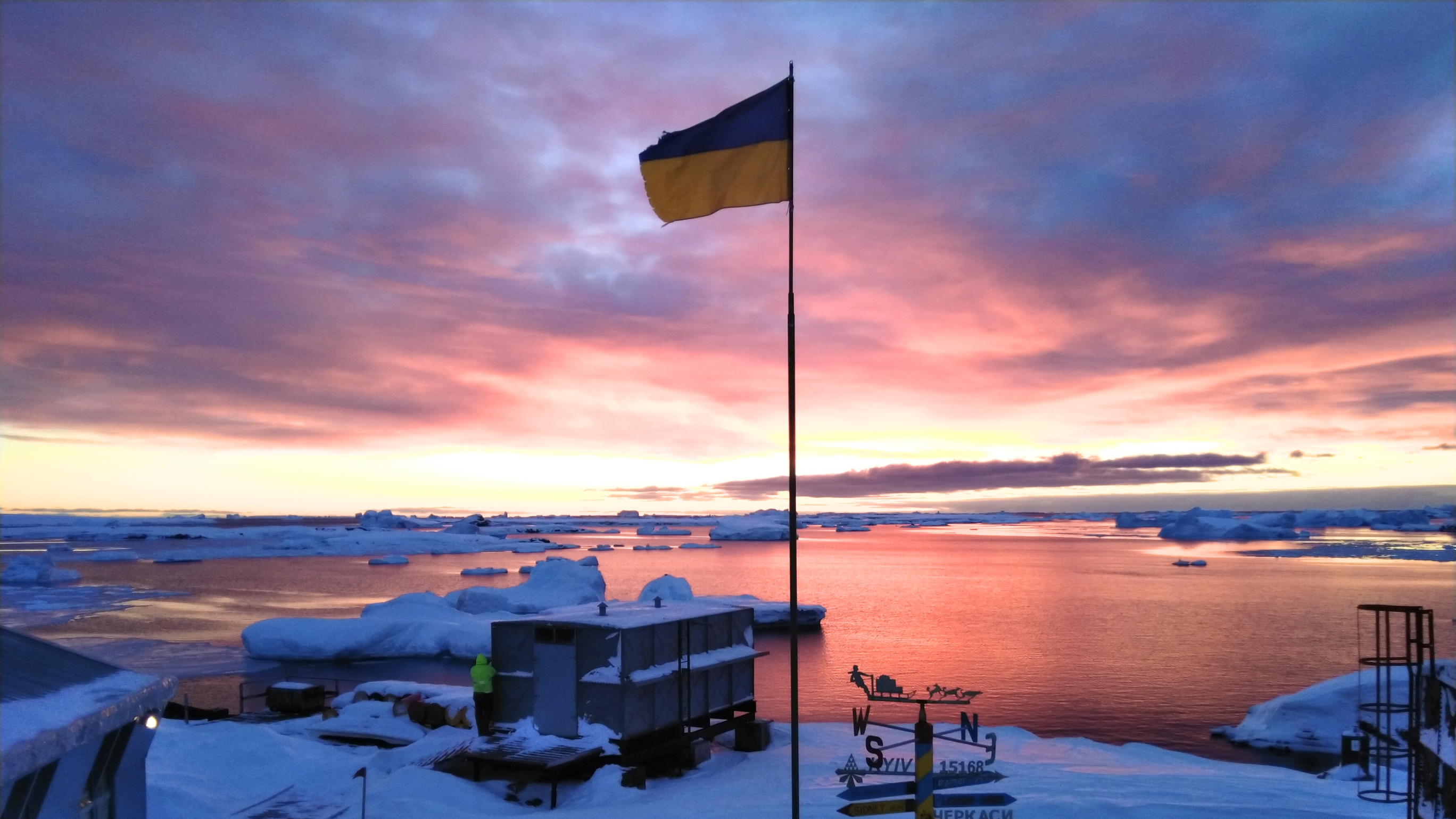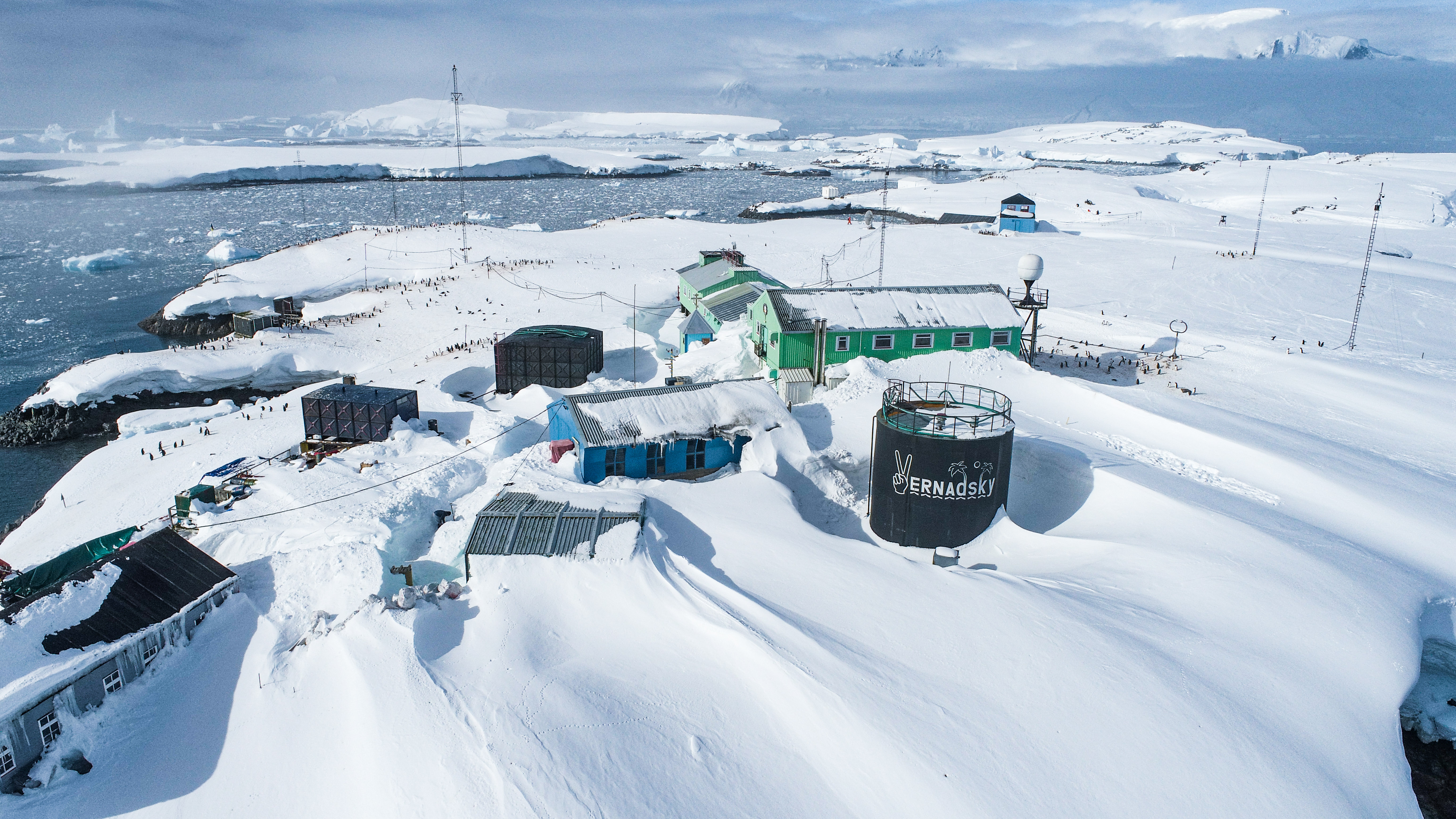
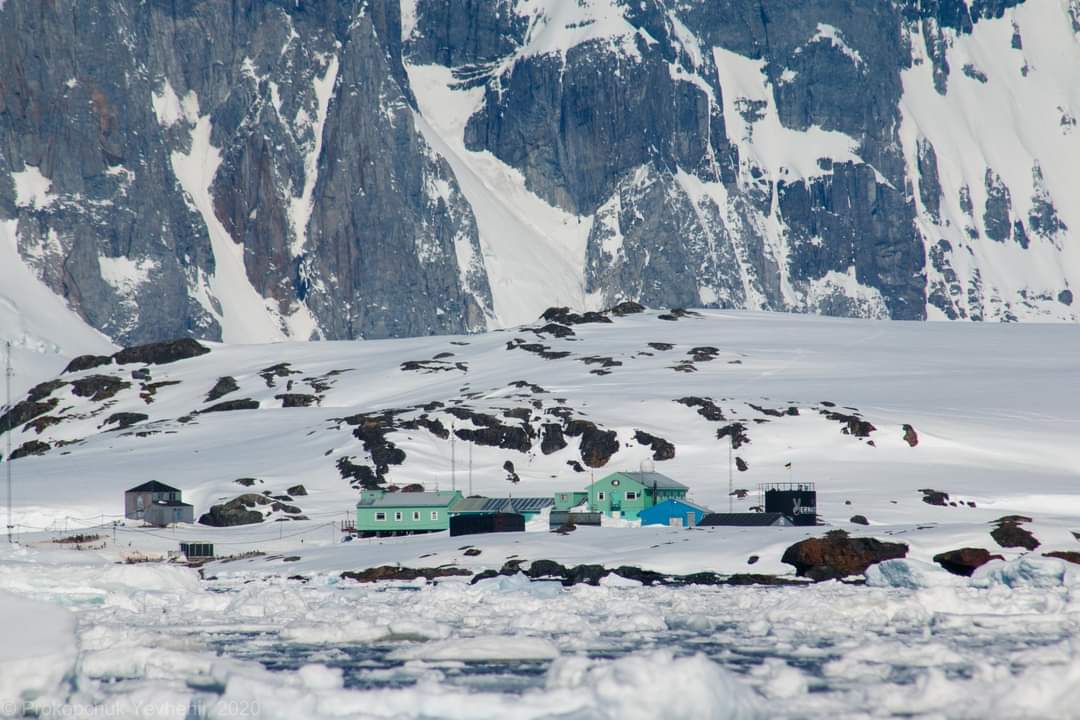
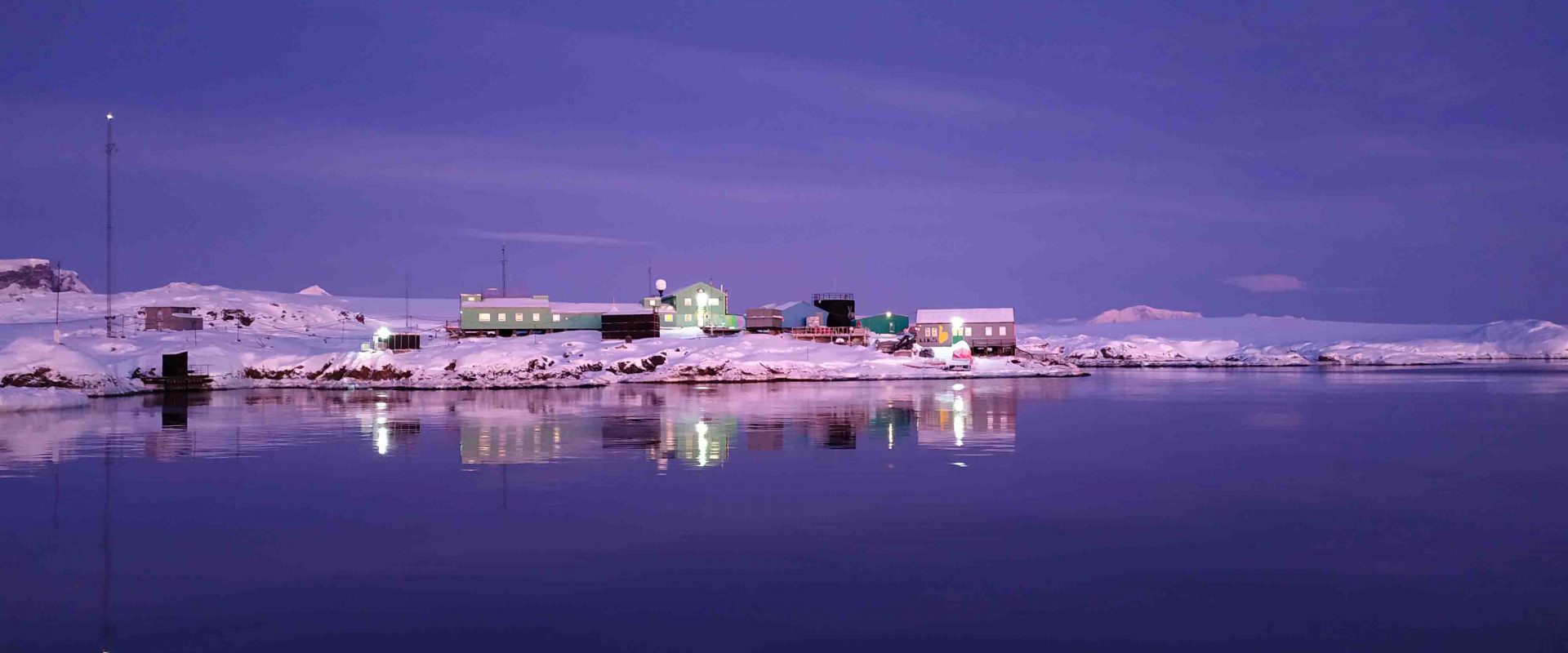
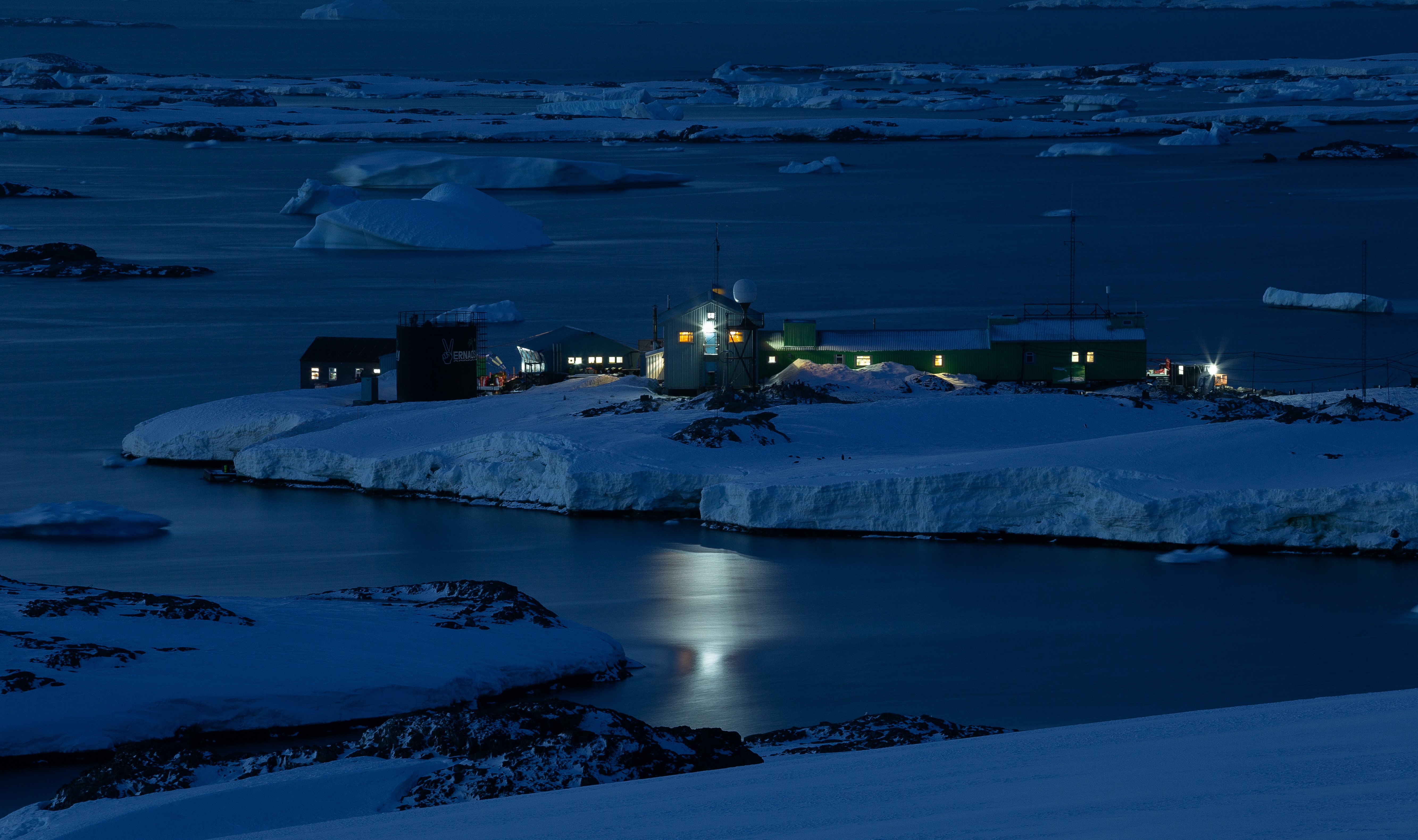
About Akademik Vernadsky Station
The Ukrainian Antarctic Akademik Vernadsky station is located on Galindez Island, Argentine Islands Archipelago, 65˚15’S, 64˚16’W. Until 1996 it was a British Faraday station.
Conducting research on the sixth continent is the main purpose of Akademik Vernadsky station. All the vital activity of the station and the National Antarctic Scientific Center, which is the national operator of Ukraine in Antarctica, is subordinated to this task.
Akademik Vernadsky station is an integral part of the system of organic interaction of many institutions both in Ukraine and abroad.
The station itself is a system with its own infrastructure, which ensures its operation throughout the year. All the year round 12-14 winterers work at the station.
The Ukrainian Antarctic station, as well as the coastal areas with diverse wildlife (Petermann Island, Lemaire Channel), monuments of the heroic discovery of Antarctica (“Wordie Hut “, Argentine Islands) attract many tourists here.
Infrastructure
Akademik Vernadsky Station consists of 12 constructions: main building; two modules of non-magnetic material, where magnetometers are installed; upper-air hall (is also used as a garage for four snowmobiles); VLF-hut; joiner’s shop, where two refrigerators are placed.
In the main building there are business premises, living accommodation and support facilities as well as laboratories (meteorological, biological, geomagnetic (with monitoring devices), ionospheric, ozonometric and seismological). There is also local “hospital” (for one bed) and medical laboratory, equipped with all necessary devices and instruments (including the X-ray unit). At Vernadsky station there is a small St. Vladimir’s chapel.
Power supply for the station is provided by one of three 100 KVA Volvo-Penta diesel generators D100B (the other two at this time are on a regular routine maintenance)
In support facilities there is also a compactor – hydraulic bundling press for packing up of volume garbage into refuse sacks and their tying up. These sacks together with metal casks filled with broken glass, chemicals or used oil products are subject to evacuation from the station (as a rule by ship) according to the set order.
In joiner’s workshop, except joiner’s instruments, two high-cube refrigerators are placed – one (up to -20°С) refrigerator is for storage of meat foods supply for the whole year of wintering. The other one (up to +4°С) is for vegetables and other foodstuff not requiring freezing. All boats and boat engines are kept here over a winter period as well as run preventive maintenance. In a separate room of the building two high-pressure pumps are mounted to deliver sea water through the conduit which is heated all-mains ~220 V along the full length to the desalination plant which is situated in the main building.
Upper-air hall was used by British expeditions for preparation and launching of meteorological sounding balloons. Now 3 snowmobiles (Skidoo) and emergency diesel-power plant with capacity of 10 kW are placed there.
Emergency base is a free-standing building serving as an emergency refuge for winterers in case of fire in the main building. Besides, 9 km from the station there is Rasmussen Hut – an emergency refuge, built by the British, with food supplies.
Away from all buildings there are two nonmagnetic halls of the Vernadsky geomagnetic observatory. Instrument transducers of sensing magnetometers which measure full geomagnetic field vector and its variations are situated here. These halls do not contain magnetic materials that would bring errors in the natural Earth’s magnetic field.
Further from nonmagnetic halls there is a VLF-hut, where receiving equipment for VLF electromagnetic oscillations is located.
In general, the research complex of the station allows the implementation of comprehensive monitoring of environmental parameters in Antarctica at all levels of the geosphere – from tectonosphere to geospace.


